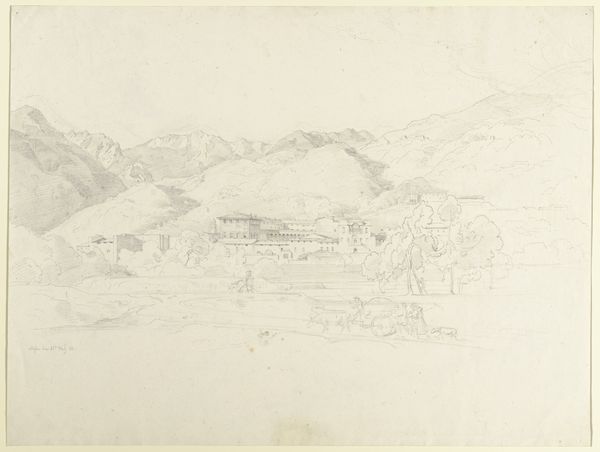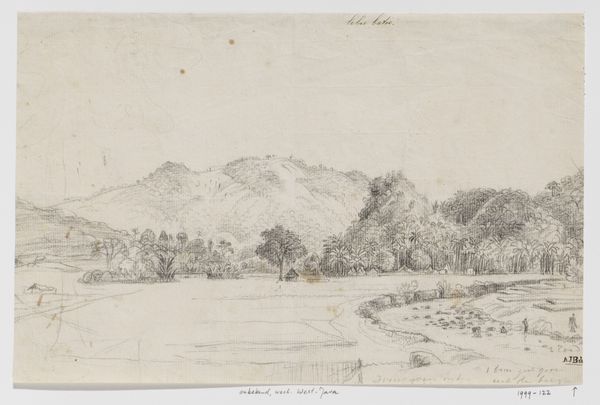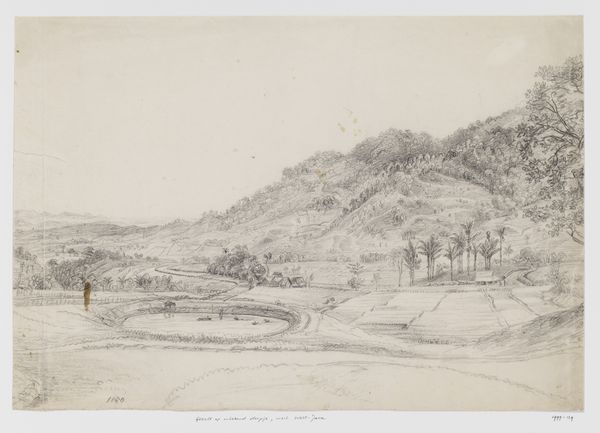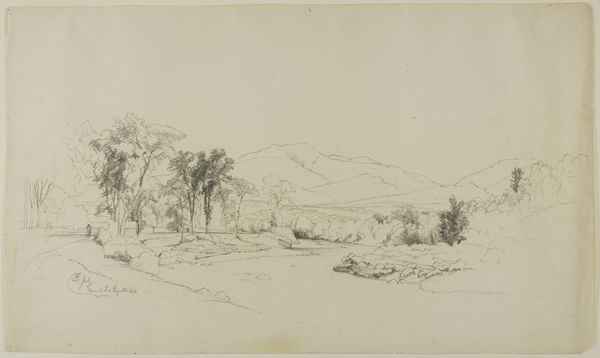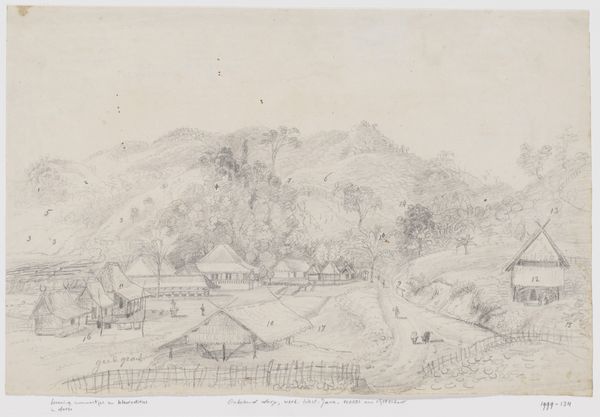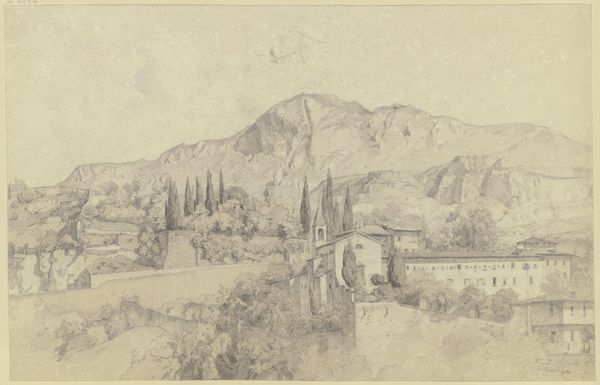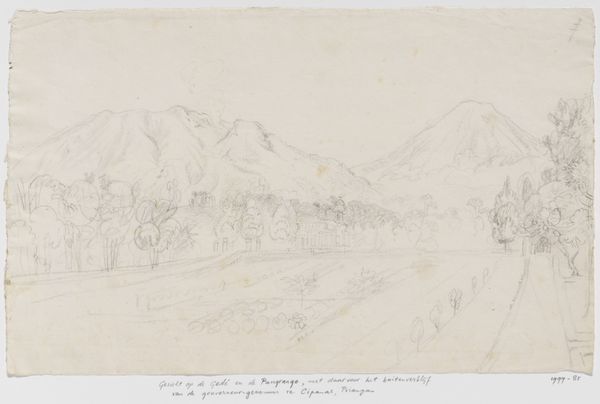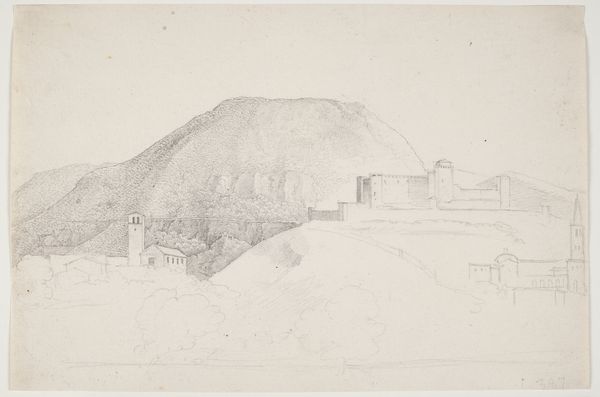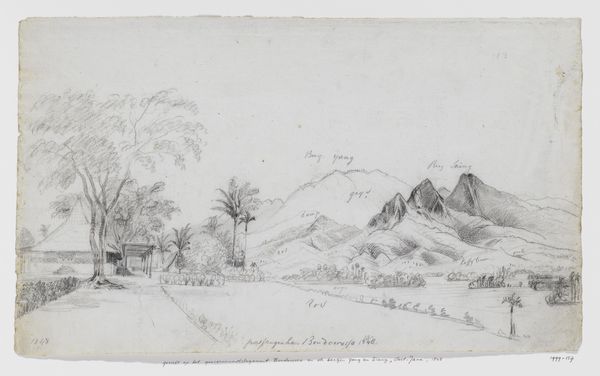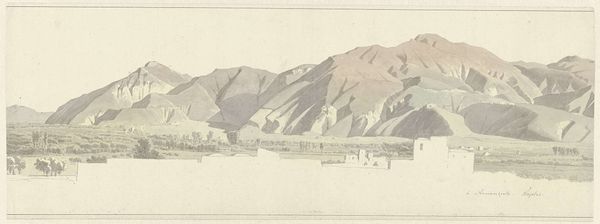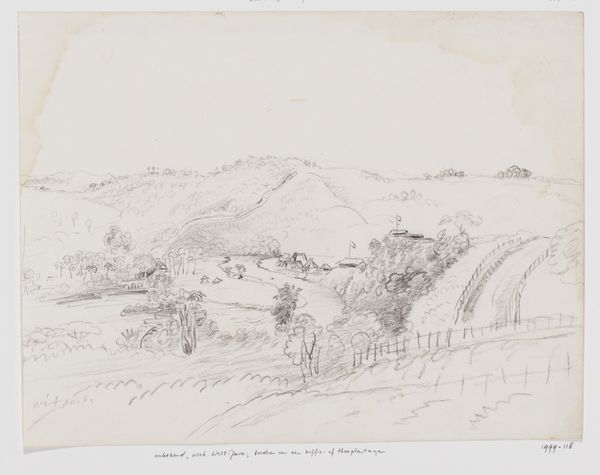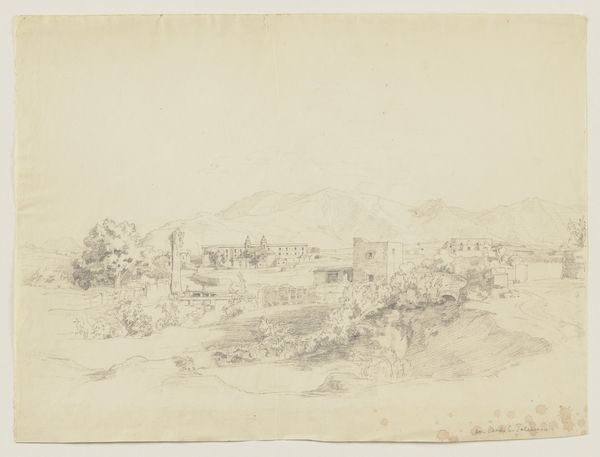
Gezicht op berg en nederzetting, met loodsen voor koffie of thee, West-Java c. 1816 - 1846
0:00
0:00
adrianusjohannesbik
Rijksmuseum
drawing, coloured-pencil, pencil
#
drawing
#
coloured-pencil
#
pencil sketch
#
landscape
#
etching
#
pencil
#
orientalism
#
realism
Dimensions: height 231 mm, width 321 mm
Copyright: Rijks Museum: Open Domain
Curator: Looking at this landscape by Adrianus Johannes Bik, created sometime between 1816 and 1846, I immediately feel drawn into the delicate balance between the architecture and natural environment. It is titled "View of a Mountain and Settlement, with Warehouses for Coffee or Tea, West-Java." Editor: It's so sparse, almost ghostly. I am interested in the sheer labor represented by this tea or coffee plantation – hard work obscured behind picturesque idealism. It looks as if it has been rendered with coloured pencils. Curator: You know, the very choice of pencil is suggestive here, a common, unassuming material chosen to depict what was intended to convey an almost majestic scene of industry. The mountain in the background—that's a signifier of nature's dominance but also a potential challenge that has been overcome. Editor: But that's precisely what makes me uneasy. Pencil, charcoal, simple tools for sketching...These became the instruments of colonial observation, documenting landscapes not for artistic expression, but for resource extraction. What labor went into making this colonial structure possible? The pencil conveniently ignores the complex power structures at play. Curator: Perhaps, but look at the carefully rendered warehouses. The composition uses these structures and the majestic mountain to evoke themes of expansion, where cultivation symbolizes the potential of colonial industry and power to transform nature into a resource. The sketch does also have a hint of Orientalism in its portrayal of West Java. Editor: Exactly, the romanticized vision simplifies and suppresses the actual exploitation required to harvest tea or coffee, presenting the illusion of a harmonious landscape shaped for consumption elsewhere. Notice the ladder on the bottom of the image, the way it implies an access point for those not belonging in this land. It screams a certain control of access that is crucial for any colonizer. Curator: I see what you mean. The artistic process, even in something as seemingly simple as a pencil drawing, does bear the weight of complex cultural narratives. It makes one wonder about the emotional and political impact it might have had on audiences at the time, and what it does to viewers today. Editor: Precisely. The material simplicity belies the sophisticated agenda, converting actual lived landscapes into a colonial commodity—both in terms of export and aesthetic consumption. We're not simply looking at scenery but observing colonial power dynamics visualized through seemingly benign artistry.
Comments
No comments
Be the first to comment and join the conversation on the ultimate creative platform.
